Optimizing Performance in Badminton Tournaments: The Relationship Between Timing, Quantity, and Quality Among Professional Players
Abstract
:1. Introduction
Research Questions and Aims
2. Materials and Methods
2.1. Study Design
2.2. Data Collection and Description
2.3. Variables and Sampling
2.3.1. Variables Studied
2.3.2. Sampling
2.4. General Descriptive Statistical Analysis
3. Results
3.1. What Is the Ideal Time Interval Between Tournaments for Top Athletes to Recover from Their Previous Competitions to Limit Their Participation in Subsequent Tournaments?
- (1)
- Data Accessibility: Retrieving comprehensive data for all players posed considerable challenges. Focusing on the top 50 allowed us to ensure a more robust and accurate analysis within the available data scope.
- (2)
- Tournament Points Distribution: The distribution of earned points, notably pertaining to Grade 1 events, like the Olympics and the World Championships, or Grade 2 tournaments, such as the Super Series, significantly differs among players ranking 50 and below. Consequently, focusing on the top 50 provides a more concentrated and relevant dataset for our study objectives.
3.2. What Is the Ideal Trade-Off Between the Number of Tournaments Played and Points Earned/Ranking Variances Explained for Increasing Efficiency? How It Influences the Point Distribution? Are There Differences in Tactic Strategies Between High-Ranked and Low-Ranked Players?
3.3. How Does the Strategic Allocation of Points by Top-Ranked Players in Tournaments Held in the Years Preceding Olympic Qualification Affect the Points Accrued by Lower-Ranked Players?
4. Discussion
5. Conclusions
Author Contributions
Funding
Institutional Review Board Statement
Informed Consent Statement
Data Availability Statement
Conflicts of Interest
References
- Edel, A.; Weis, J.L.; Ferrauti, A.; Wiewelhove, T. Training Drills in High Performance Badminton—Effects of Interval Duration on Internal and External Loads. Front. Physiol. 2023, 14, 1189688. [Google Scholar] [CrossRef]
- Cabello Manrique, D.; González-Badillo, J.J. Analysis of the Characteristics of Competitive Badminton. Br. J. Sports Med. 2003, 37, 62–66. [Google Scholar] [CrossRef]
- Torres-Luque, G.; Fernández-García, Á.I.; Blanca-Torres, J.C.; Kondric, M.; Cabello-Manrique, D. Statistical Differences in Set Analysis in Badminton at the RIO 2016 Olympic Games. Front. Psychol. 2019, 10, 731. [Google Scholar] [CrossRef]
- Madzar, T.; Masina, T.; Zaja, R.; Kastelan, S.; Cvetkovic, J.P.; Brborovic, H.; Dvorski, M.; Kirin, B.; Barisic, A.V.; Cehok, I.; et al. Overtraining Syndrome as a Risk Factor for Bone Stress Injuries among Paralympic Athletes. Medicina 2023, 60, 52. [Google Scholar] [CrossRef]
- Brenner, J.S.; Watson, A. Overuse Injuries, Overtraining, and Burnout in Young Athletes. Pediatrics 2024, 153, e2023065129. [Google Scholar] [CrossRef] [PubMed]
- Kellmann, M.; Kellmann, M. Preventing Overtraining in Athletes in High-Intensity Sports and Stress/Recovery Monitoring. Scand. J. Med. Sci. Sports 2010, 20, 95–102. [Google Scholar] [CrossRef] [PubMed]
- Lemyre, P.N.; Roberts, G.C.; Stray-Gundersen, J. Motivation, Overtraining, and Burnout: Can Self-Determined Motivation Predict Overtraining and Burnout in Elite Athletes? Eur. J. Sport. Sci. 2007, 7, 115–126. [Google Scholar] [CrossRef]
- Kreher, J.B.; Schwartz, J.B. Overtraining Syndrome: A Practical Guide. Sports Health 2012, 4, 128. [Google Scholar] [CrossRef] [PubMed]
- Phomsoupha, M.; Laffaye, G. The Science of Badminton: Game Characteristics, Anthropometry, Physiology, Visual Fitness and Biomechanics. Sports Med. 2015, 45, 473–495. [Google Scholar] [CrossRef] [PubMed]
- Gómez, M.A.; Cid, A.; Rivas, F.; Barreira, J.; Chiminazzo, J.G.C.; Prieto, J. Dynamic Analysis of Scoring Performance in Elite Men’s Badminton According to Contextual-Related Variables. Chaos Solitons Fractals 2021, 151, 111295. [Google Scholar] [CrossRef]
- Doeven, S.H.; Brink, M.S.; Kosse, S.J.; Lemmink, K.A.P.M. Postmatch Recovery of Physical Performance and Biochemical Markers in Team Ball Sports: A Systematic Review. BMJ Open Sport Exerc. Med. 2018, 4, 264. [Google Scholar] [CrossRef] [PubMed]
- Herring, S.A.; Ben Kibler, W.; Putukian, M.; Berkoff, D.J.; Bytomski, J.; Carson, E.; Chang, C.J.; Coppel, D. Load, Overload, and Recovery in the Athlete: Select Issues for the Team Physician-A Consensus Statement. Curr. Sports Med. Rep. 2019, 18, 141–148. [Google Scholar] [CrossRef]
- Altarriba-Bartes, A.; Peña, J.; Vicens-Bordas, J.; Milà-Villaroel, R.; Calleja-González, J. Post-Competition Recovery Strategies in Elite Male Soccer Players. Effects on Performance: A Systematic Review and Meta-Analysis. PLoS ONE 2020, 15, e0240135. [Google Scholar] [CrossRef]
- Haugen, T.; Seiler, S.; Sandbakk, Ø.; Tønnessen, E. The Training and Development of Elite Sprint Performance: An Integration of Scientific and Best Practice Literature. Sports Med.-Open 2019, 5, 44. [Google Scholar] [CrossRef] [PubMed]
- Iizuka, A.; Suzuki, H.; Ogawa, S.; Kobayashi-Cuya, K.E.; Kobayashi, M.; Takebayashi, T.; Fujiwara, Y. Can Cognitive Leisure Activity Prevent Cognitive Decline in Older Adults? A Systematic Review of Intervention Studies. Geriatr. Gerontol. Int. 2019, 19, 469–482. [Google Scholar] [CrossRef] [PubMed]
- Franchini, E.; Takito, M.Y.; Da Silva, R.M.; Shiroma, S.A.; Wicks, L.; Julio, U.F. Optimal Interval for Success in Judo World-Ranking Competitions. Int. J. Sports Physiol. Perform. 2017, 12, 707–710. [Google Scholar] [CrossRef]
- Galeano, J.; Gómez, M.Á.; Rivas, F.; Buldú, J.M. Using Markov Chains to Identify Player’s Performance in Badminton. Chaos Solitons Fractals 2022, 165, 112828. [Google Scholar] [CrossRef]
- Barreira, J.; Chiminazzo, J.G.C.; Fernandes, P.T. Analysis of Point Difference Established by Winners and Losers in Games of Badminton. Int. J. Perform. Anal. Sport 2016, 16, 687–694. [Google Scholar] [CrossRef]
- O’Brien, R.M. A Caution Regarding Rules of Thumb for Variance Inflation Factors. Qual. Quant. 2007, 41, 673–690. [Google Scholar] [CrossRef]
- Brown, M.B.; Forsythe, A.B. Robust Tests for the Equality of Variances. J. Am. Stat. Assoc. 1974, 69, 364. [Google Scholar] [CrossRef]
- Abián-Vicén, J.; Sánchez, L.; Abián, P. Performance Structure Analysis of the Men’s and Women’s Badminton Doubles Matches in the Olympic Games from 2008 to 2016 during Playoffs Stage. Int. J. Perform. Anal. Sport 2018, 18, 633–644. [Google Scholar] [CrossRef]
- Bisschoff, C.A.; Coetzee, B.; Esco, M.R. Relationship between Autonomic Markers of Heart Rate and Subjective Indicators of Recovery Status in Male, Elite Badminton Players. J. Sports Sci. Med. 2016, 15, 658. [Google Scholar] [PubMed]
- Fernandez-Fernandez, J.; De La Aleja Tellez, J.G.; Moya-Ramon, M.; Cabello-Manrique, D.; Mendez-Villanueva, A. Gender Differences in Game Responses during Badminton Match Play. J. Strength Cond. Res. 2013, 27, 2396–2404. [Google Scholar] [CrossRef]
- Moreno-Perez, V.; Gallo-Salazar, C.; Del Coso, J.; Ruiz-Pérez, I.; Lopez-Valenciano, A.; Barbado, D.; Cabello-Manrique, D.; Fernandez-Fernandez, J. The Influence of a Badminton Competition with Two Matches in a Day on Muscle Damage and Physical Performance in Elite Junior Badminton Players. Biol. Sport. 2020, 37, 195–201. [Google Scholar] [CrossRef] [PubMed]
- Abdullahi, Y.; Coetzee, B.; Van Den Berg, L. Relationships between Results of an Internal and External Match Load Determining Method in Male, Singles Badminton Players. J. Strength Cond. Res. 2019, 33, 1111–1118. [Google Scholar] [CrossRef] [PubMed]
- Wiyata, I.R.; Kusuma, D.W.Y.; Irawan, F.A. Burnout and Dropout Analysis of Badminton Adolescence Athletes: Reviewed in Psychological Aspect. J. Phys. Educ. Sports 2022, 11, 152–162. [Google Scholar] [CrossRef]
- Iizuka, T.; Hirano, K.; Atomi, T.; Shimizu, M.; Atomi, Y. Changes in Duration and Intensity of the World’s Top-Level Badminton Matches: A Consideration of the Increased Acute Injuries among Elite Women’s Singles Players. Sports 2020, 8, 19. [Google Scholar] [CrossRef]
- Song, H.; Rajakani, K. Analysis of Winning Experience and Technical Training Effect of Badminton Match Based on BP Neural Network. J. Healthc. Eng. 2022, 2022, 5295881. [Google Scholar] [CrossRef] [PubMed]
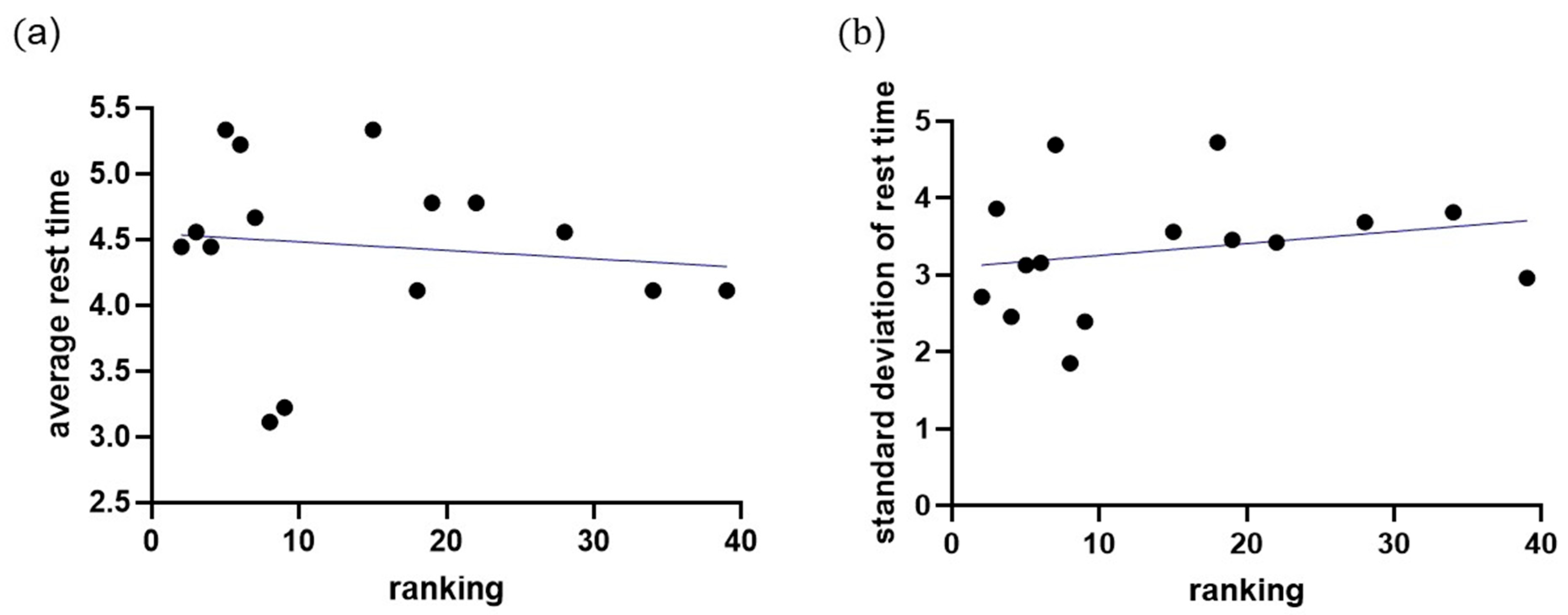
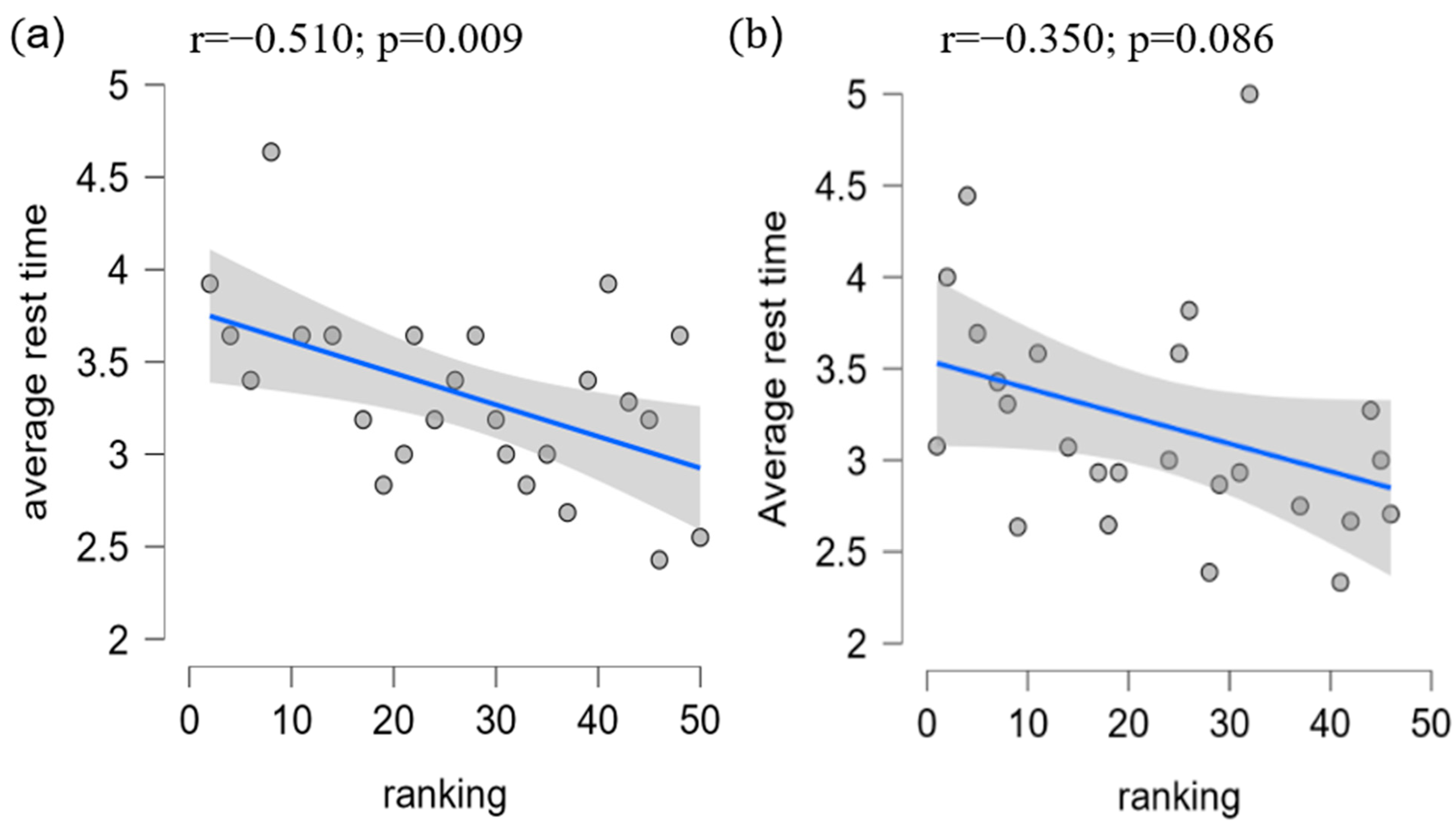

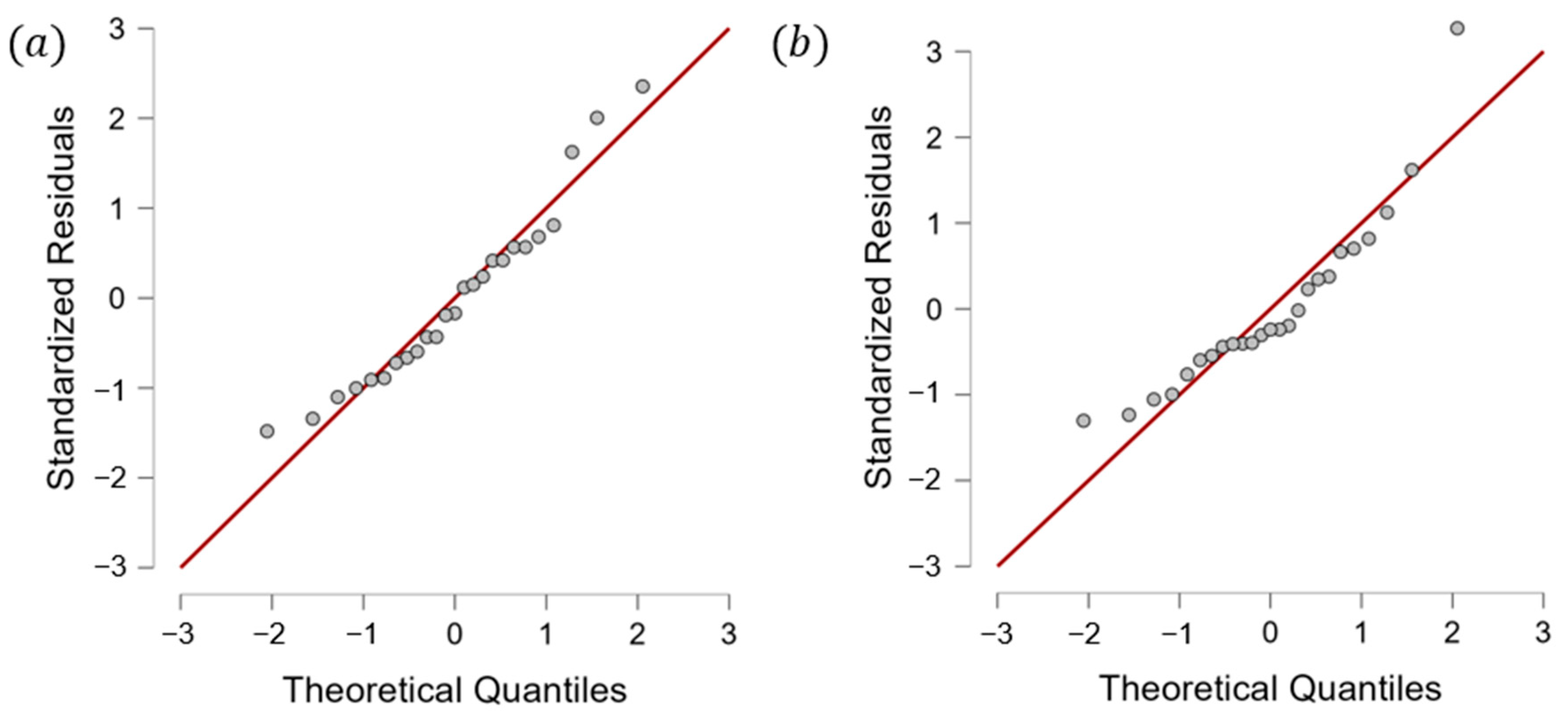
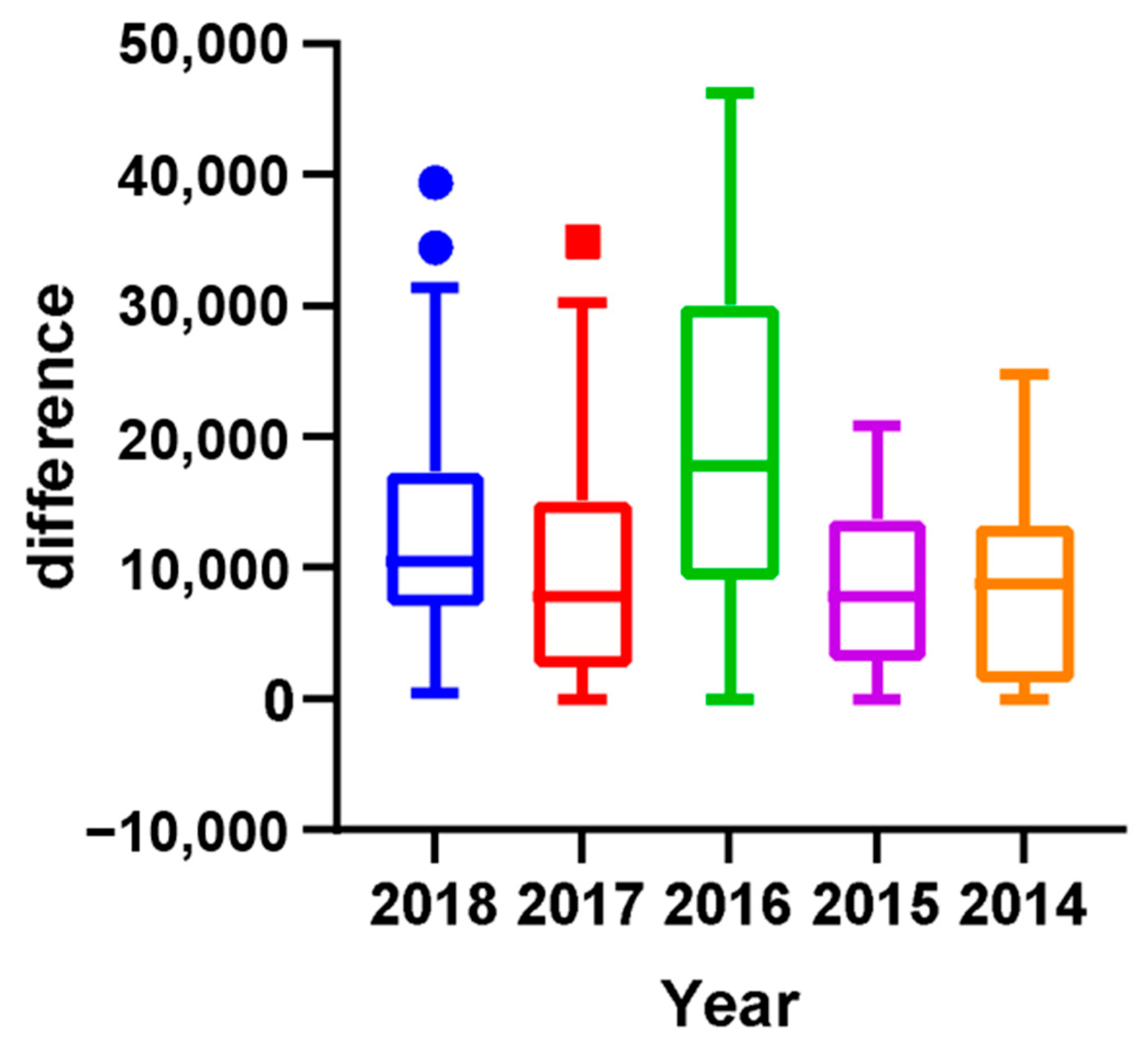

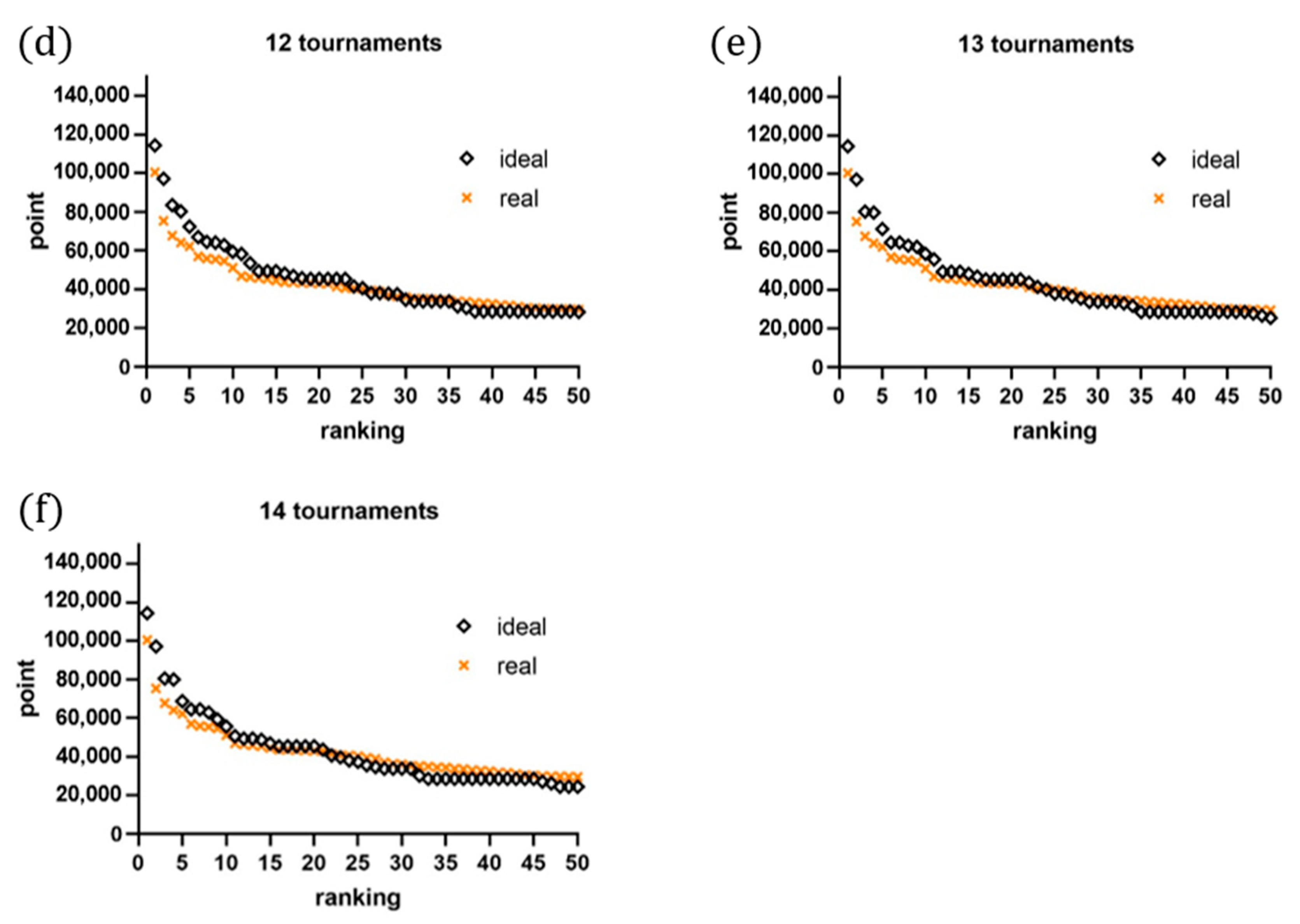



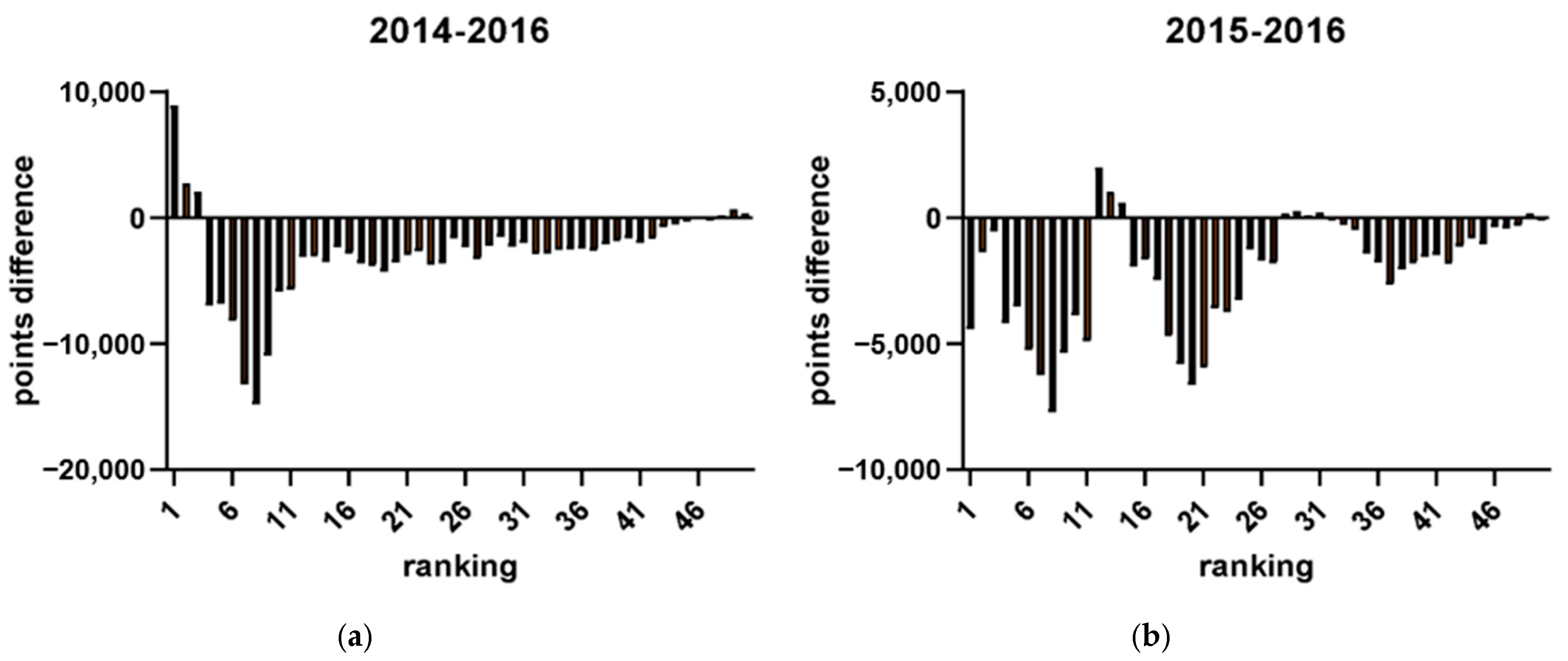
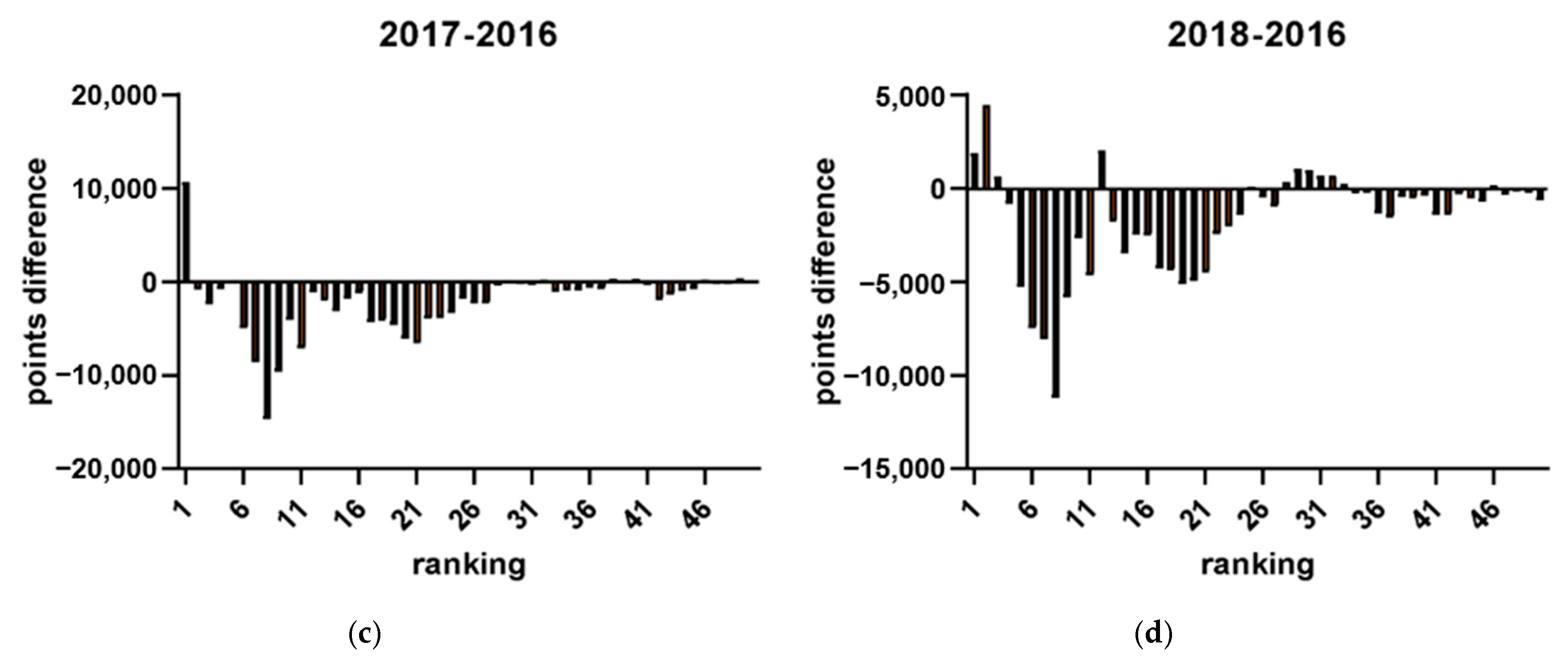
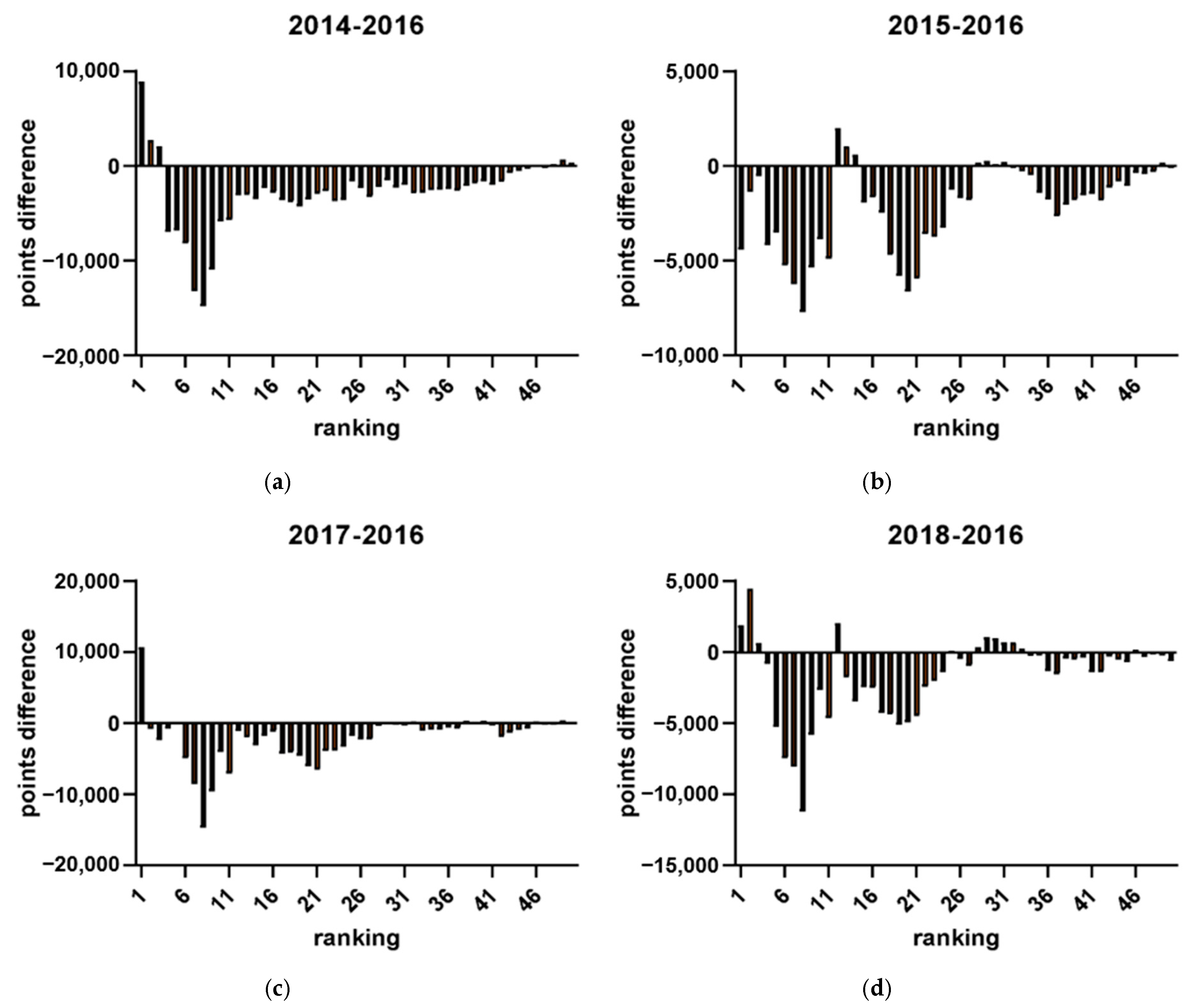
Disclaimer/Publisher’s Note: The statements, opinions and data contained in all publications are solely those of the individual author(s) and contributor(s) and not of MDPI and/or the editor(s). MDPI and/or the editor(s) disclaim responsibility for any injury to people or property resulting from any ideas, methods, instructions or products referred to in the content. |
© 2024 by the authors. Licensee MDPI, Basel, Switzerland. This article is an open access article distributed under the terms and conditions of the Creative Commons Attribution (CC BY) license (https://creativecommons.org/licenses/by/4.0/).
Share and Cite
Hsu, J.-H.; Lin, H.-L.; Fan Chiang, H.-C.; Lee, D.-S.; Lee, Y.; Huang, C.-W.; Yao, Z.-F. Optimizing Performance in Badminton Tournaments: The Relationship Between Timing, Quantity, and Quality Among Professional Players. J. Funct. Morphol. Kinesiol. 2025, 10, 5. https://doi.org/10.3390/jfmk10010005
Hsu J-H, Lin H-L, Fan Chiang H-C, Lee D-S, Lee Y, Huang C-W, Yao Z-F. Optimizing Performance in Badminton Tournaments: The Relationship Between Timing, Quantity, and Quality Among Professional Players. Journal of Functional Morphology and Kinesiology. 2025; 10(1):5. https://doi.org/10.3390/jfmk10010005
Chicago/Turabian StyleHsu, Jen-Hao, Hsin-Lun Lin, Hung-Chieh Fan Chiang, Duan-Shin Lee, Yang Lee, Cheng-Wei Huang, and Zai-Fu Yao. 2025. "Optimizing Performance in Badminton Tournaments: The Relationship Between Timing, Quantity, and Quality Among Professional Players" Journal of Functional Morphology and Kinesiology 10, no. 1: 5. https://doi.org/10.3390/jfmk10010005
APA StyleHsu, J.-H., Lin, H.-L., Fan Chiang, H.-C., Lee, D.-S., Lee, Y., Huang, C.-W., & Yao, Z.-F. (2025). Optimizing Performance in Badminton Tournaments: The Relationship Between Timing, Quantity, and Quality Among Professional Players. Journal of Functional Morphology and Kinesiology, 10(1), 5. https://doi.org/10.3390/jfmk10010005





